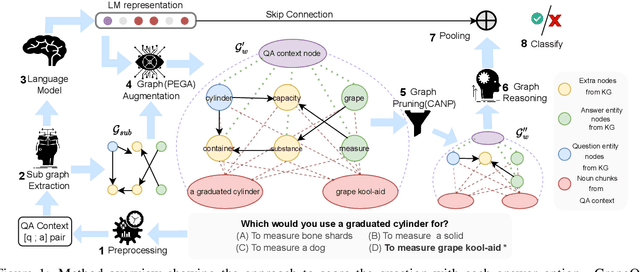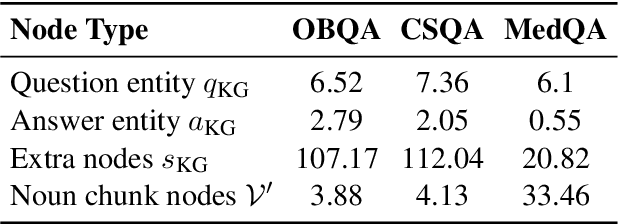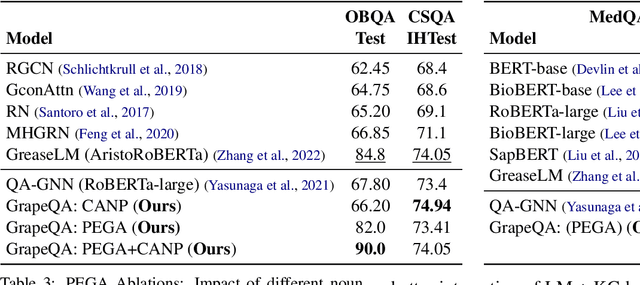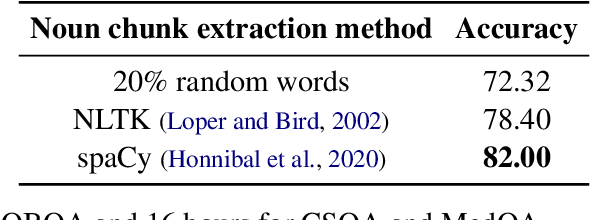GrapeQA: GRaph Augmentation and Pruning to Enhance Question-Answering
Paper and Code
Mar 22, 2023



Commonsense question-answering (QA) methods combine the power of pre-trained Language Models (LM) with the reasoning provided by Knowledge Graphs (KG). A typical approach collects nodes relevant to the QA pair from a KG to form a Working Graph (WG) followed by reasoning using Graph Neural Networks(GNNs). This faces two major challenges: (i) it is difficult to capture all the information from the QA in the WG, and (ii) the WG contains some irrelevant nodes from the KG. To address these, we propose GrapeQA with two simple improvements on the WG: (i) Prominent Entities for Graph Augmentation identifies relevant text chunks from the QA pair and augments the WG with corresponding latent representations from the LM, and (ii) Context-Aware Node Pruning removes nodes that are less relevant to the QA pair. We evaluate our results on OpenBookQA, CommonsenseQA and MedQA-USMLE and see that GrapeQA shows consistent improvements over its LM + KG predecessor (QA-GNN in particular) and large improvements on OpenBookQA.
 Add to Chrome
Add to Chrome Add to Firefox
Add to Firefox Add to Edge
Add to Edge